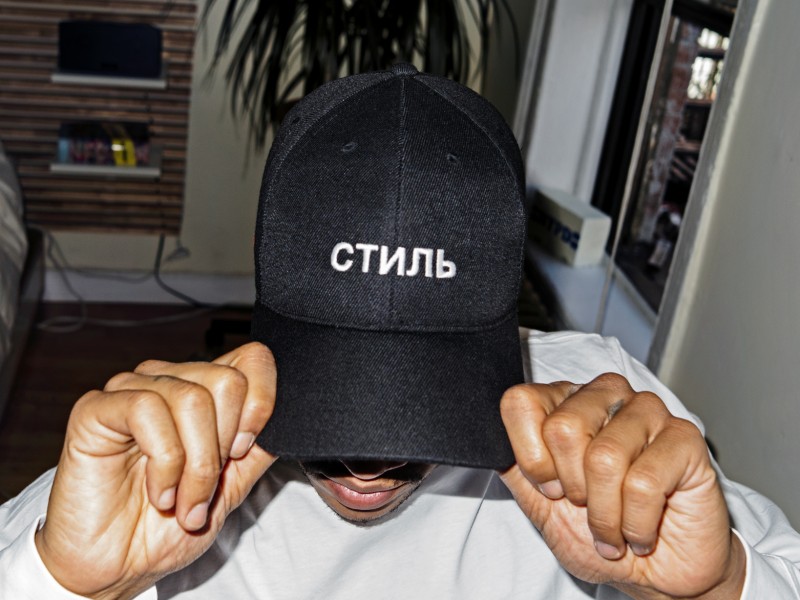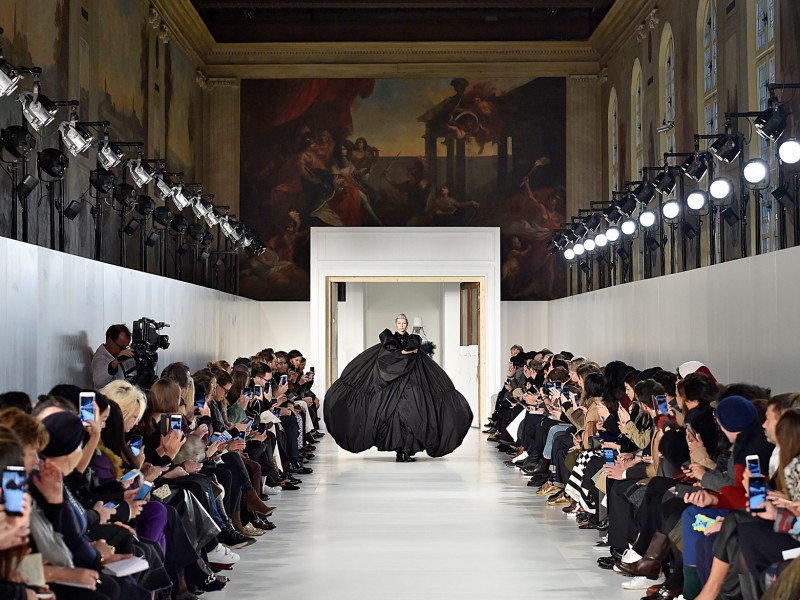Since its launch in 2013, Virgil Abloh’s Milan-based label Off-White has helped storm the luxury barricades, not to destroy but to liberate. Named after the colour of a blank canvas, Abloh’s streetwear has taken its place beside venerated luxury brands such as Ralph Lauren, Gucci and Saint Laurent—but with a philosophy that has carved its own niche into the fashion world.
Off-White imbues a notion of self-made and cult inspired fashion. The name is almost a challenge, a blank canvas Abloh dares you to fill. A holder of degrees in civil engineering and architecture, Abloh broke into the fashion world working as Kanye West’s creative director. The two men completed internships at Fendi to prepare for West’s poorly-received foray into ready-to-wear fashion in 2011 and 2012.
Since then Abloh has succeeded where West could not, using the prime closing night to debut his Spring/Summer 2018 collection at Florence’s Pitti Immagine Uomo in June 2017. Abloh has come a long way since his first collection, the delectably punk offering, Pyrex, which was more of a low-tech screen-printing operation than a high fashion concept. Abloh took deadstock $40 Ralph Lauren flannels and printed PYREX 23 on the back then sold them for $500. “It became an essential starting point. But it was more like an art project, a moment in time, just a vision that I had.” The number 23, Michael Jordan’s number, was important to Abloh. In 1990s Chicago, Jordan was king, and in a GQ interview, Abloh likens his own rise to that of Jordan. “You saw him get better. You got to watch that every season.”
At a lecture at Columbia University earlier this year, Abloh expanded on the thought: “In impoverished black areas of the world, mainly Chicago, there’s an adage that the only way to make it out is either be as good as Michael Jordan or sell drugs.” Pyrex is the glass utensil used to cook crack. The number 23 is the epitome of basketball. Abloh makes it clear his fashion is an art form that both imitates and comments on life and the world around him.
Abloh’s first Off-White collection, titled The Youth Will Always Win, was transitional, featuring similar designs to his Pyrex offering. Later, the brand came into its own, featuring self-styling t-shirts, hoodies, military jackets and ripped jeans reminiscent of Tommy Ton photography. “Girls wearing Céline and their boyfriend’s Air Force Ones. My premise is to create a brand that’s immersed in this young fashion customer,” Abloh told The New York Times. Abloh was born in 1980 to Ghanaian immigrants and raised in Rockford, Illinois. His first degree in Civil Engineering was meant as a way to be responsible. “I’d spent so much time thinking practical things.” It wasn’t until his last year of college that he took an art elective and was introduced to the Renaissance painter Caravaggio. “It flipped my head backward,” he says of the experience. “I felt that a random black kid from the suburbs of Chicago shouldn’t be doing that.”
Streetwear and hip-hop are linked, like the Renaissance and the rediscovery of Greek philosophy. Abloh’s Grammy award nomination, for the design of the 2012 album Watch The Throne, ties Caravaggio to hip-hop. The symmetrical, almost architecturally baroque gold album cover dismisses any notion of separation between high and low culture. Abloh seems to enjoy this kind of cross-pollination, and stated in the Columbia lecture that young architects migrating to other fields “can change the world by not building buildings”. Being immersed is more than a full time job. Abloh racks up hundreds of flights each year and is connected to real-time culture through Instagram and Tumblr. Followers constantly tag him in pictures of a theme similar to his latest collections: a London zebra crossing; the crosshatch of a building façade; the worn mosaic floor of a Haussmann-esque arcade.
“My big premise is current culture, the young people providing content,” Abloh says in an interview with The Cut. “That’s my drive, actually. I don’t think I’ve achieved anything. I’m trying to learn by doing and get this crescendo … of making culturally important things in the same way that Basquiat or Warhol did.”
What the Internet isn’t in the process of destroying, it is at least levelling out. Streetwear and its makers have migrated from downtown Los Angeles, New York and Tokyo to the realms of high fashion because the traditional gatekeepers were made obsolete, replaced with crowd sourcing networks and those who knew how to read and connect those networks.
“Right now the whole gatekeeper system is so screwed up. They lost their footing. It’s raining. Kids can push them over. I know kids who are half my age who can kill a brand on a whim, make it uncool if they want to,” Abloh says.
The eroding opprobrium of streetwear by the old-guard fashion houses seems more a symptom of systemic flexibility than of any seismic shift. Abloh’s Off-White is, if anything, an authentic representation of something others seem to merely parrot. That Off-White is being taken seriously is perhaps testament to where we are in the great rebuilding, after the great levelling.
If Kanye West is in the musical vanguard of this process—global, aspirational, genre defying, utilitarian and forged in the suburbs of South Chicago—then Virgil Abloh is his fashion equivalent. Unafraid of mixing high with low, old with new, both men represent a youth tied less and less to place, work or religion than to possibility and change. Fast-paced change is all they and their customers have ever known.
When asked how his clothes are supposed to appeal to youth culture while being so expensive he replies: “I don’t have an answer. This concept of a brand, the image, what the clothing looks like, that’s free. Go make your own version of it. It’s meant to inspire.”
For more visit www.off---white.com
Related Features
-
240
-
-
-

